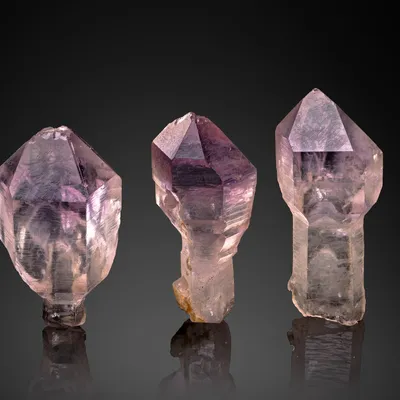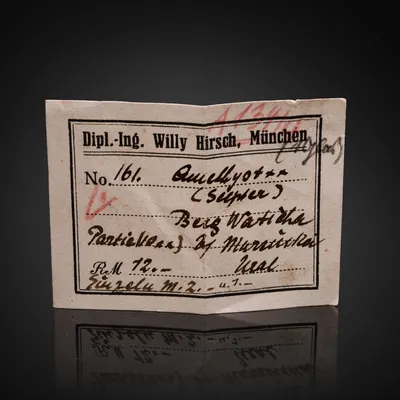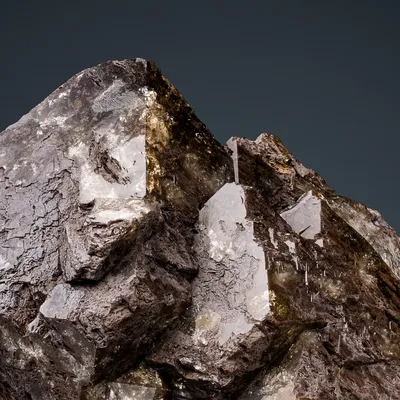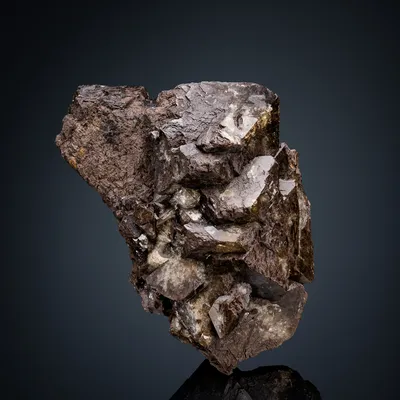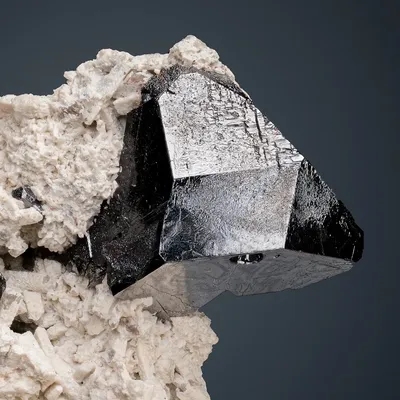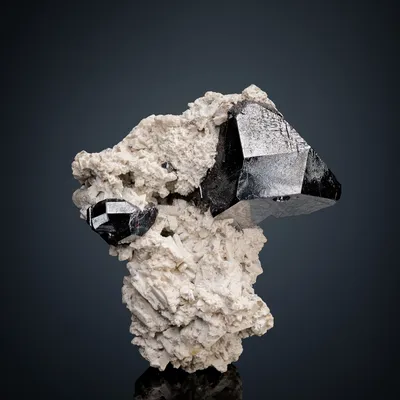Mückeit – a rare Mineral from the Siegerland in Germany
The rare copper-nickel-bismuth sulphide mückeit was first discovered in the Grüne Au mine in Siegerland, Germany. An outline of the special discovery site and the history of the unique find.

The Siegerland region is known for its 2000-year-old mining tradition. The coveted iron ore has always been the focus of our interest. It brought us prosperity and work for many generations. The last winding towers have been idle since 1965. The loud noise of the winding machines was to be silenced forever. The redundant buildings were demolished down to the foundations.
Nothing was to be the same again. A lively hustle and bustle around the valuable iron took its fateful course. Siegerland iron ore was no longer in demand. The competition from Sweden was able to offer the ore in Germany more cheaply than the local mines could extract it. The death knell for the local iron ore industry. Today, there are only a few remnants of the mining industry that was so important back then. The old spoil tips had to be used for road construction for cost reasons. Others were built over.
Nature did the rest. These circumstances do not exactly make it easy for mineral collectors to pursue their hobby. Old mine maps had to be compared with current hiking or road maps in order to determine the exact location. In doing so, the collectors succeeded and continue to succeed in finding new and interesting mineral sites.
One of these is the Grüne Aue mine near Schutzbach. It is located about 15 km SW of Siegen and can be assigned to the "Bindweider-Schutzbacher Gangzug". This vein zone lies approximately on the middle or upper Siegen strata. Until the mine was shut down in 1912, mining operations focused on the extraction of spar and brown ironstone. The veins were up to 4 meters thick. Copper and nickel ores, which generated higher profits at the time, were only found here as by-products. Around 1876, Prof. Laspeyres described a new nickel sulphide mineral from the Grüne Au mine in detail in his work. He gave it the name "polydymite".
It crystallizes in an octahedral habit and its color is tin-white with a strong metallic luster. The size of most individuals is only up to 1 mm, but in exceptional cases they can be up to 10 mm in size. In the paragenesis with polydymite, the minerals chalcopyrite, pyrite, sphalerite, bismuthinite and millerite occur as typical companions.
The polydymites are sometimes impaled on needle-like, highly lustrous millerite crystals, which is very attractive. The Grüne Au pit is the type locality for polydymite. Between Schutzbach and Kausen there is a large basalt vein at the top of the mountain. The vein of the Grüne Au mine also runs in its immediate vicinity. A special feature that is very rare in the Siegerland (e.g. the Wolf mine near Herdorf). These special circumstances were decisive for the fact that about 70 years later, collectors were able to find and describe over 100 new minerals ( Schnorrer and Latsch and others ).
Minerals such as rutile, anatase, brookite, fayalite, hedenbergite and leucite, to name but a few, were formed through the contact of the ore vein with the basalt vein. In the 1980s, local collector Herman Latsch made a unique discovery. He found a lump of siderite interspersed with extremely rare nickel minerals.
Not all of this unusual paragenesis was easy to identify visually. Further radiographic examinations were necessary. These were kindly carried out by Dr. Günter Schnorrer from Göttingen and surprisingly revealed lapieite, a highly rare nickel mineral. In terms of its appearance and composition, the material from the Grüne Au pit was identical to that from the Lapie River in Canada.
However, further qualitative and quantitative measurements showed that some of the crystals examined contained bismuth instead of antimony, so that lapieite was no longer present. It was therefore a new, previously unknown mineral which was recognized in 1990 and given the name "Mückeit". Another type locality for this mine! The mineral Mückeit was named in honor of Prof. Dr. Arno Mücke, Göttingen, for his merits in the field of special mineralogy and reflected light microscopy. Mückeit and lapieite are visually indistinguishable from one another. More precise examinations are essential for a correct identification. The mückeite itself is formed by the oriented displacement of primary lapieite.
It forms gray-metallic, shiny, tabular and elongated crystals up to max. 5 mm in length.
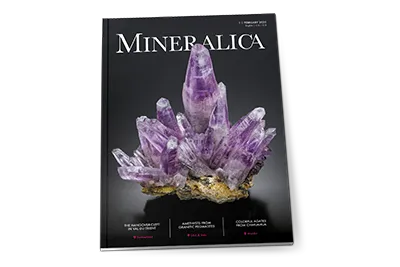
The new premium magazine for mineral collectors
4 issues per year – packed with fascinating finds, expert knowledge, and collector passion. The first bilingual magazine (German/English), including full online access.
Explore subscriptionThe typical striations and ripples on the crystal surfaces can also be seen very clearly. Millerite, polydymite, dense bismuth, aikinite and lapieite are the typical companions of mückeite. In its surroundings, bismuthinite is usually found in a heavily corroded state. This is a good indication of the occurrence of mückeite. To date, no other sites of this extremely rare copper-nickel-bismuth mineral have been discovered. For the time being, the Grüne Au mine remains the only place where a unique, extremely rare mineral has been found.
It will be interesting to see what unknown treasures the Siegerland has in store for us collectors in the future - let's wait and see.




